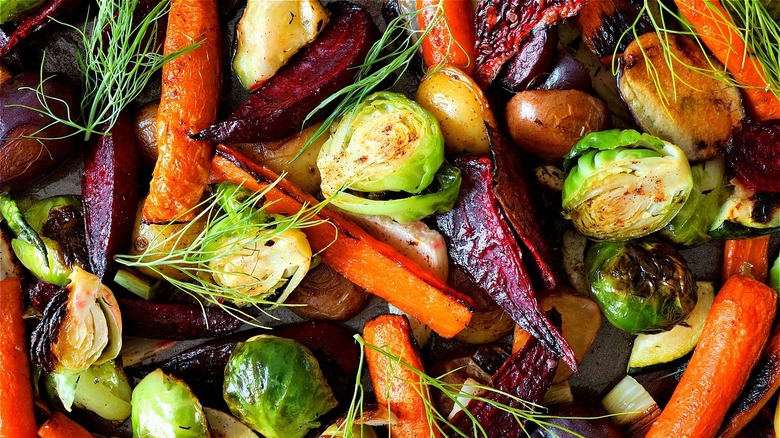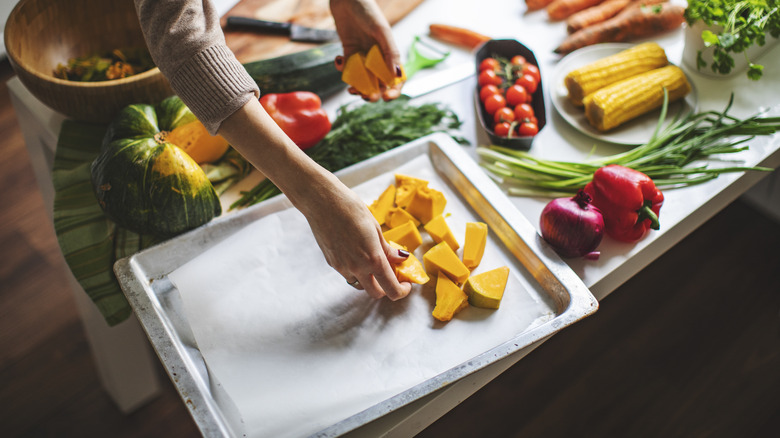Roasting Vegetables In A Casserole Dish Is A Steamy Disaster
Roasted vegetables are one of the greatest dishes any home cook should add to their repertoire. Besides being the only way to eat Brussels sprouts, knowing how to use an oven or air fryer to turn bland vegetables into wonderfully caramelized bites of joy is a great way to introduce more nutrition into your diet. There are some major pitfalls you need to avoid, though, like under-seasoning them or coating them in too little oil. While these may require some trial and error to find what works best for your palette, there's one mistake you always need to be aware of to avoid a mushy, steamy disaster: Never use a casserole dish to roast your vegetables.
Moisture is the enemy of caramelization, and casserole dishes stifle water evaporation leading to soggy roasted veggies. The reason for this is twofold. First, raw vegetables naturally have a ton of water in them, and the point of roasting them is to remove that moisture and allow them to get a little bit sweeter and browned. Second, the high walls and tighter design of a casserole dish compared to that of a large roasting tray lead to overcrowding. Having raw vegetables so close to each other while they cook, in conjunction with the walls of the casserole dish naturally trapping moisture, results in you not being able to develop any kind of flavorful crispy bits on your vegetables.
How to avoid mushy roasted vegetables
If you simply can't avoid using a casserole dish to roast your vegetables, there are a couple of things you can try to mitigate the amount of condensation. Since vegetables contain so much water, you can try blanching them in salt water first to help draw out moisture from the surface. This method works especially well if you want to majorly elevate your roasted potatoes, as the salt in the boiling water pulls water in the vegetable up to its surface where it can evaporate after blanching. You can also try liberally salting the vegetables in advance and letting them sit for a while. This not only seasons them but draws water out, which then allows you to roast them in the casserole dish with better results.
The king vessel for any roasting endeavor, though, is a large shallow baking sheet. Large baking sheets allow you to really spread out your vegetables so that they have enough space to let their water content evaporate evenly and thoroughly. Whether you're cooking a bunch of asparagus evenly lined in a row or a random assortment ranging from broccoli to parsnips, there are still some guidelines you should follow for great roasted vegetables: Don't skimp on the salt, don't be too conservative with the oil, and don't set and forget. Just like when cooking any piece of meat, make sure to flip your vegetables around halfway through so that they get even caramelization and roasted flavor on both sides.

